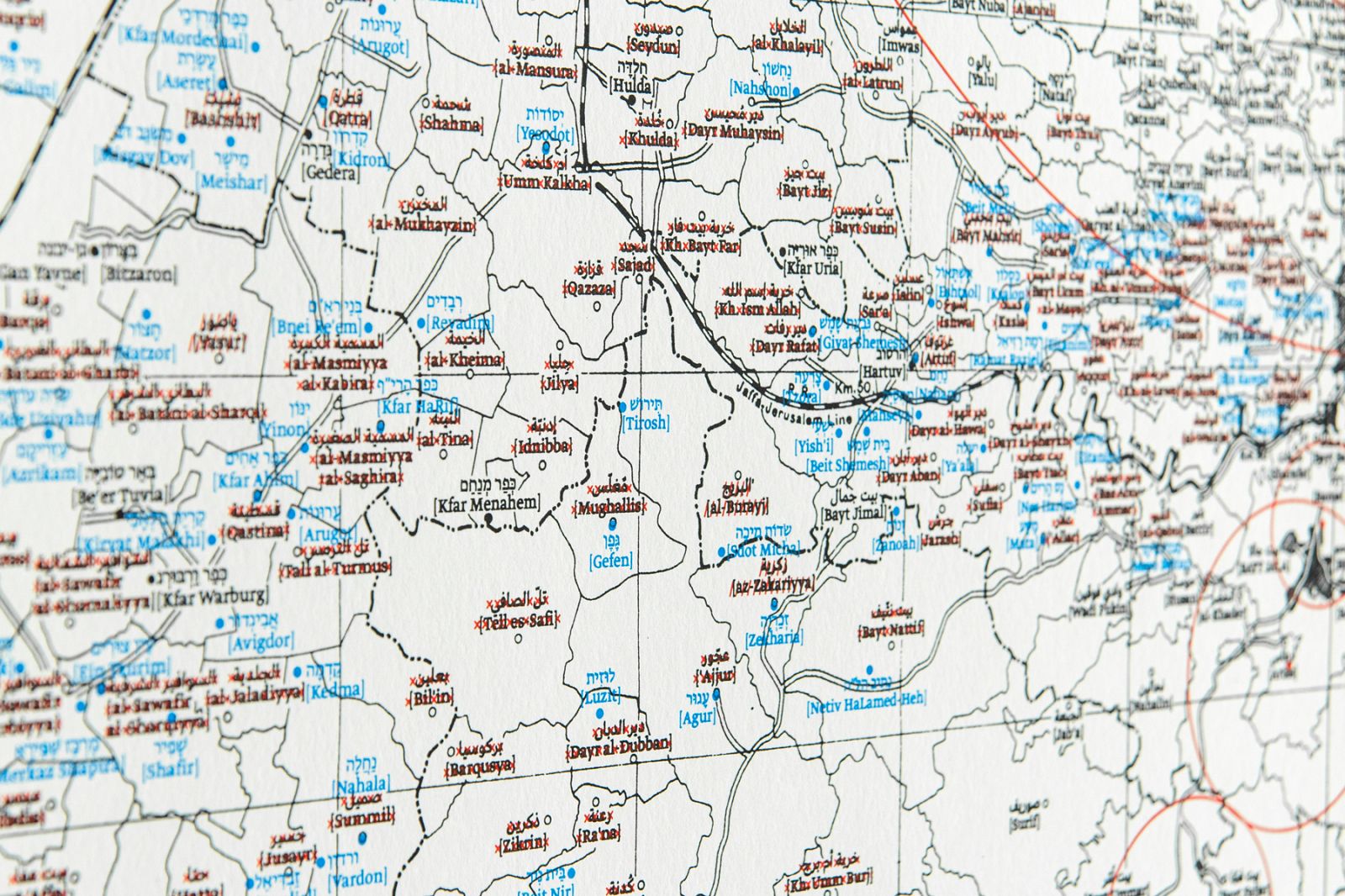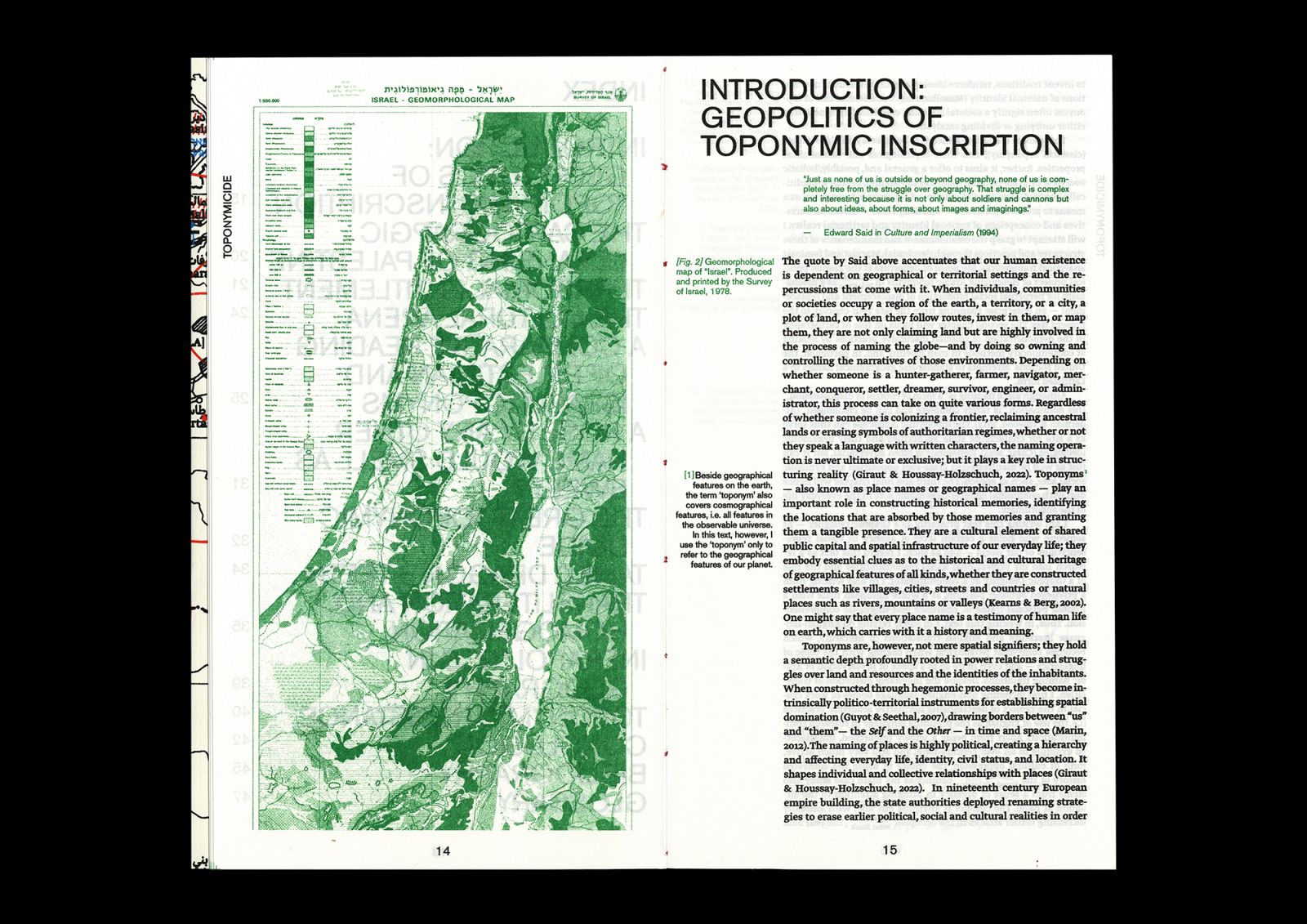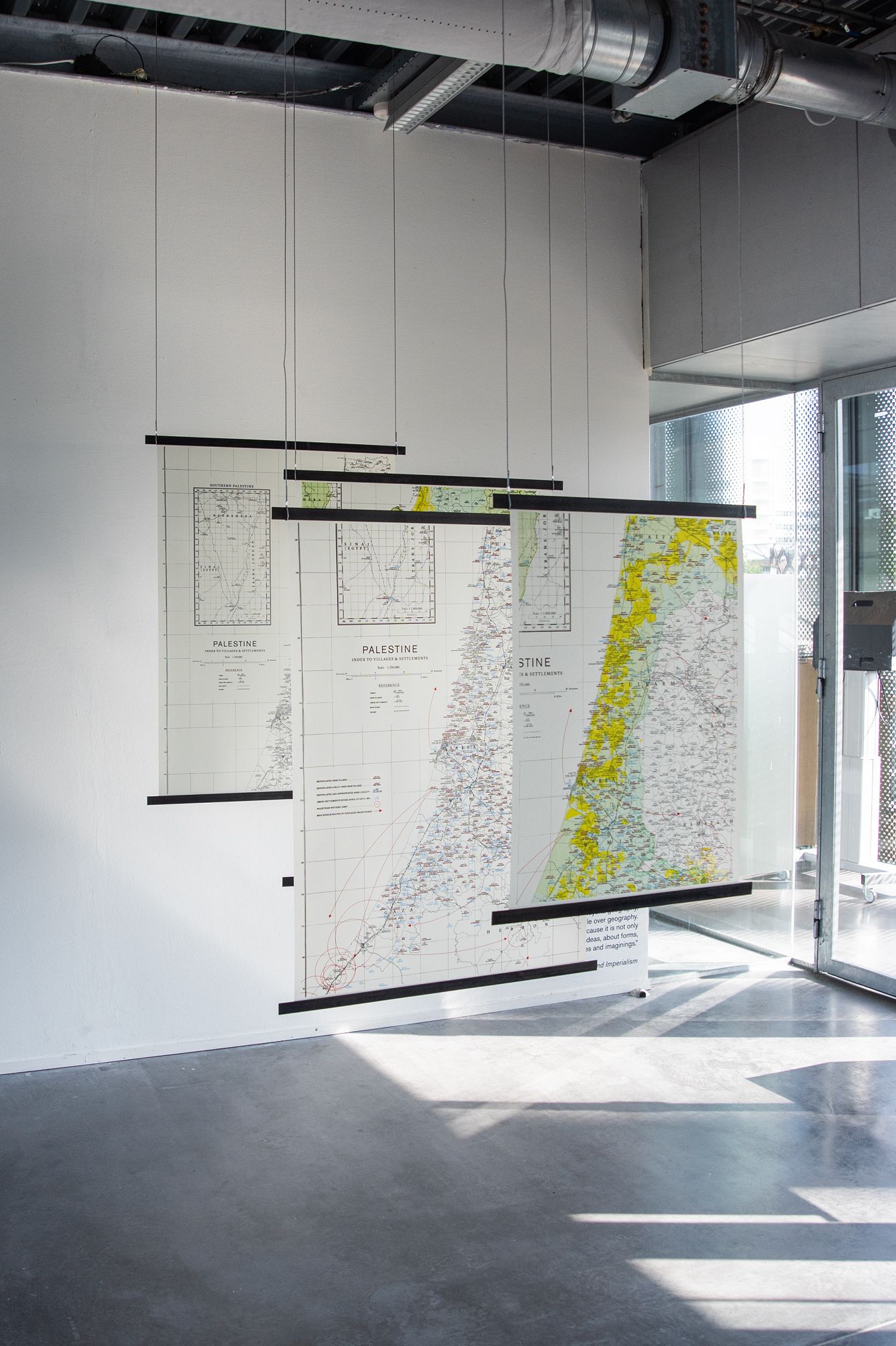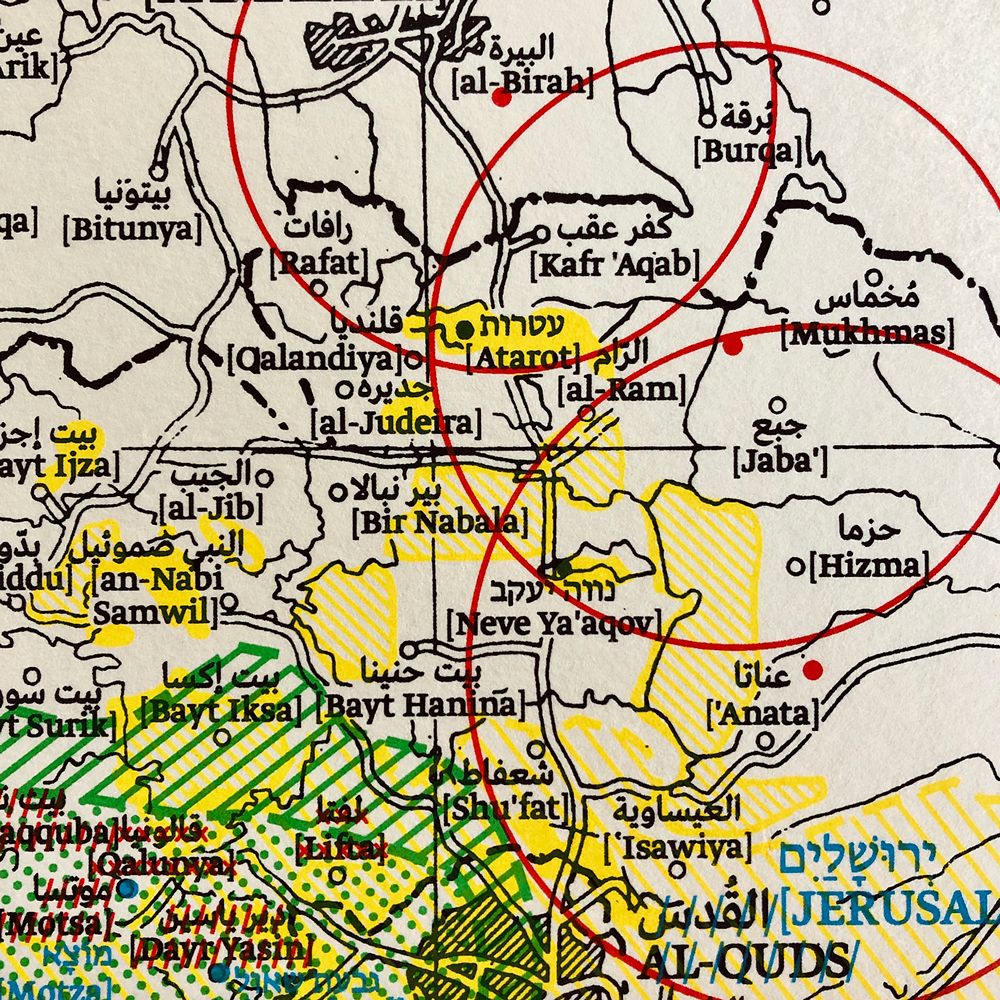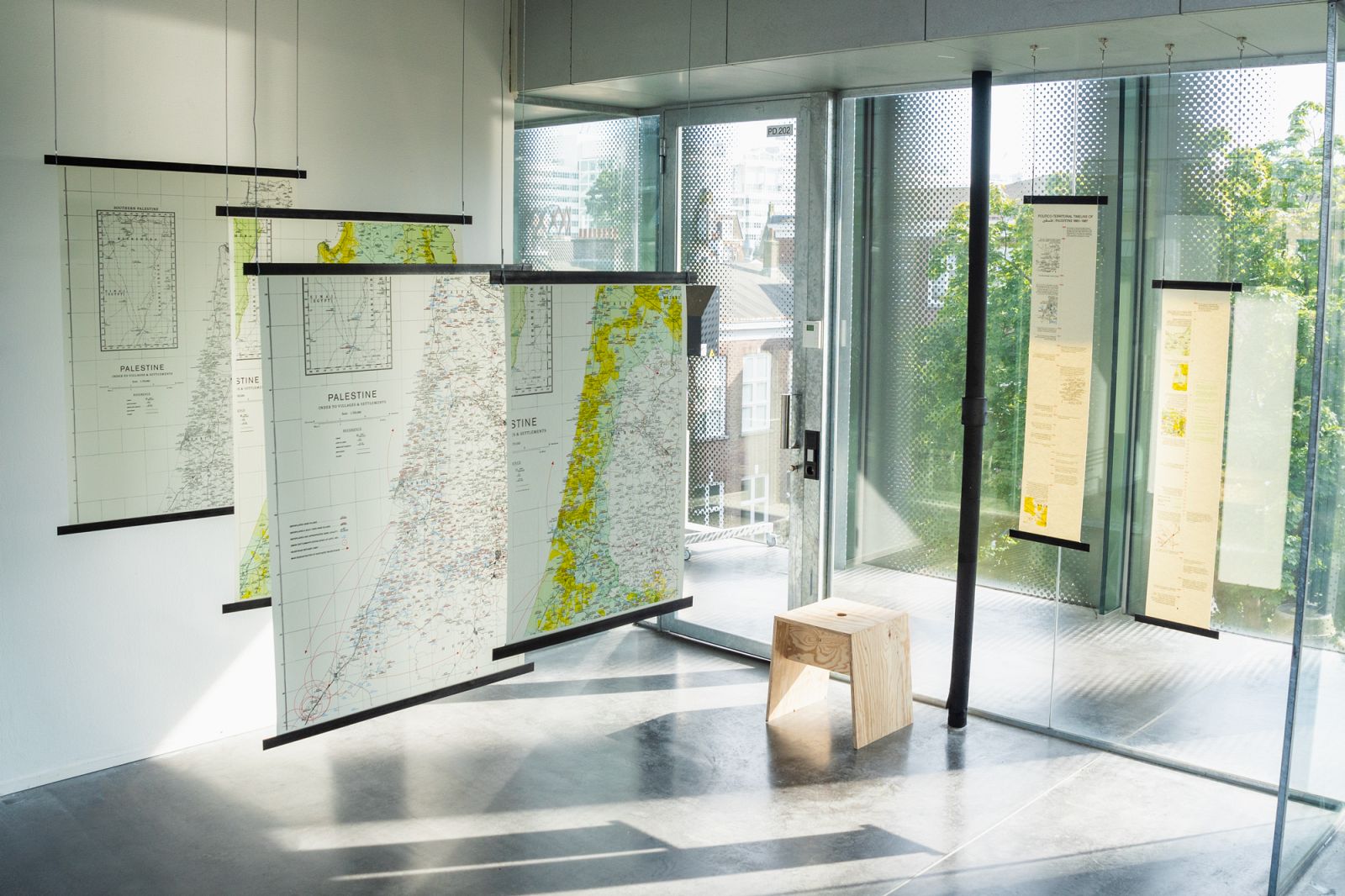
Samuel Salminen
Keywords: Geopolitics, Linguistics, Maps
Internship: Pangram Pangram Foundry
Read Thesis
samuelsalminen.com/
samuel.salminen@icloud.com
+358407600292
www.instagram.com/samuelsamsa/
Cartography is intrinsically a form of political discourse—whether intentional or unintentional, maps produce and, above all, suppress knowledge and perpetuate systems of power and oppression. Non-papers of Constructed Absence investigates the ways in which maps and other forms of spatial representation—reinforced by the languages and writing-systems they employ to create meaning—are used as instruments for shaping socio-political narratives while erasing indigenous voices, spaces, and histories.
Drawing upon comparative analysis of maps created between 1946 and 1951—before and after the Nakba and the establishment of the State of Israel—Samuel utilises layered spatial data, overprinting, and multi-script typesetting to intervene with ‘official’ documents and shed light on the silencing and desired non-existence of Palestinians that lies at the heart of Zionist cartographic narratives; investigating what has been erased, added, and altered in order to deconstruct the politico-territorial narratives the maps reproduce. By drawing attention to these power dynamics, the work challenges the idea that cartography can ever be truly objective, and strives to imagine new ways of representing space that are more rooted in plurality, historical transparency, and social justice.
